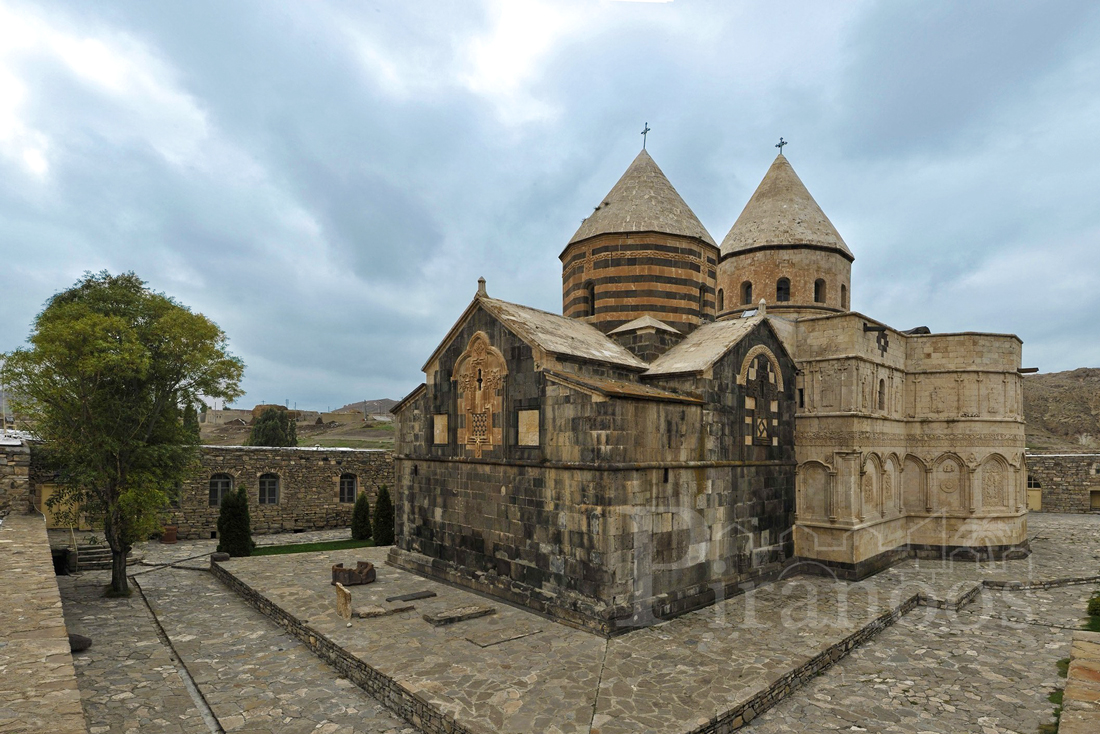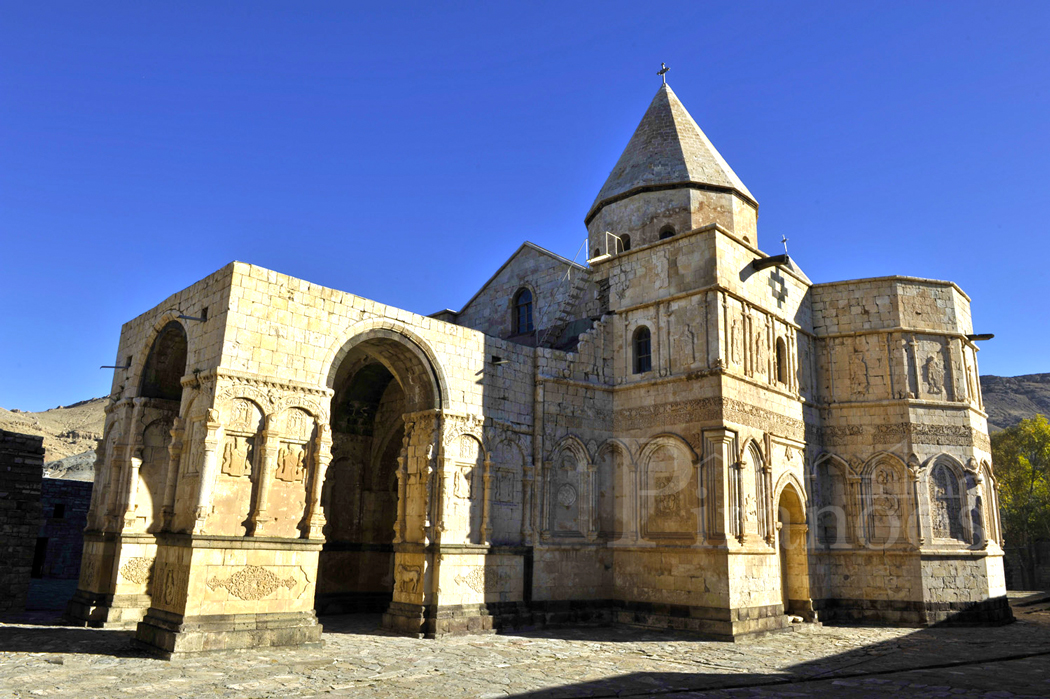This church is located 20 kilometers northeast of Chaldaran city, in a village of the same name. Saint Thaddeus is one of the apostles of Jesus Christ who came to the south of the Armenian plateau to preach Christianity. At that time the Parthians ruled in Iran and many people were Zoroastrians or believed in Mithraism. Upon the invitation of the apostles of Christ to this religion in Iran, 3,500 people accepted Christianity, including Sandruk or Sanaduk the Armenian King and his daughter. After a short while, the king turns away from Christianity and commands to kill all those who had turned in to this religion (even his daughter San dukht).
In 66 AD, Saint Thaddeus, along with San-Dokht, the daughter of the king and some other fellowships, who believed in Christianity, were arrested at the behest of the then Armenian king and killed after torture, and Saint Thaddeus was buried in the present location of the monastery. It has become one of the most important Armenian holy places.
St. Thaddeus Monastery is also called Ghare or Ghara Kelisa. The word “Ghara” is Turkish, meaning black. Because the eastern part of the church is made of black stone.
During various periods of history due to the many battles that took place in this area, the St. Thaddeus Monastery suffered extensive damages, most notably after the Mongol invasion of Genghis Khan in 1230 AD, which destroyed most parts of the church but later during the reign of Holaku Khan, the church was rebuilt by Khaja Nasiruddin Tusi. A devastating earthquake in the 14th century destroyed the church and the remaining building was restored by Bishop Zakaria and two of his brothers, Peter and Sarkis, over a period of 10 years. The last rebuilding of the church was during the time of Abbas Mirza, the Crown Prince of Fath Ali Shah Qajar. The rebuilding of this new church was inspired by the design of the Etchmiadzin Cathedral.
According to some historians, the St. Thaddeus Monastery appears to be the first church built by the evangelists in the world, and Armenian Christians hold special ceremonies every year on the last week of July and the first week of August, which coincides with the martyrdom of St. Thaddeus.



